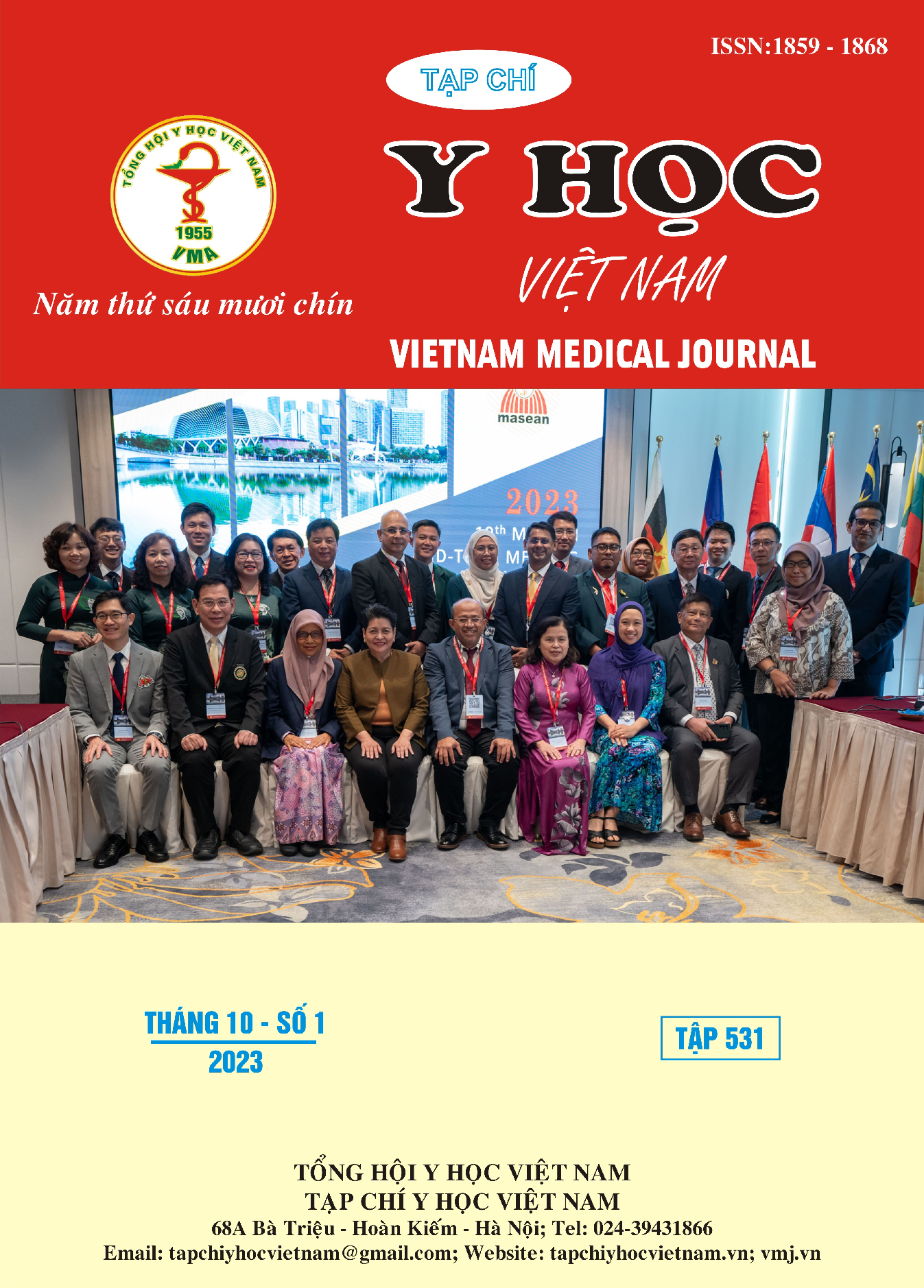ANALYSIS OF THE IS1111 GENE OF Coxiella burnetii IN Q FEVER PATIENTS FROM VIET NAM FROM 2018 TO 2019
Main Article Content
Abstract
Objective: Decribe some epidemiological and clinical features of patients; Phylogenetic analysis of C. burnetii sequences of the IS1111 gene was conducted to determine the genetic relatedness with previous isolates from the world. Materials and Methods: Descriptive cross-sectional study on Q fever patients at 27 hospitals in 26 provinces of Vietnam from 2018 to 2019. Main findings: 7 out of 29 patients included in the study (24,1%) yielded 7 sequences of the IS1111 gene. The mean age of the patients was 48,13 ± 10 (36-60). All Q fever patients (n=7) were male, rural inhabitants (100%), farmers (57,1%). The most common symptoms of Q fever were headache (100%), myalgia (86%), cough (63%), skin congestion (57%). In this study, none of the sample sequences clustered with previous isolates from the world. Conclusions: The prevalence of sequences of the IS1111 gene was 24,1% with a high proportion was men, people of working age, especially farmers, and who living in rural areas. None of Coxiella burnetii strain isolated in Vietnam have a common origin with strains isolated from different localities, on different samples such as cattle, buffaloes, cows, and ticks...
Article Details
Keywords
Coxiella burnetii, Q fever, IS1111
References
2. Angelakis E, Mediannikov O, Socolovschi C, et al. Coxiella burnetii-positive PCR in febrile patients in rural and urban Africa. Int J Infect Dis IJID Off Publ Int Soc Infect Dis. 2014;28:107-110. doi:10.1016/j.ijid.2014.05.029
3. Duron O. The IS1111 insertion sequence used for detection of Coxiella burnetii is widespread in Coxiella-like endosymbionts of ticks. FEMS Microbiol Lett. 2015;362(17):fnv132. doi:10.1093/ femsle/fnv132
4. Eldin C, Mélenotte C, Mediannikov O, et al. From Q Fever to Coxiella burnetii Infection: a Paradigm Change. Clin Microbiol Rev. 2017;30(1):115-190. doi:10.1128/CMR.00045-16
5. Fenollar F, Raoult D. Molecular genetic methods for the diagnosis of fastidious microorganisms. APMIS Acta Pathol Microbiol Immunol Scand. 2004;112(11-12):785-807. doi:10.1111/j.1600-0463.2004.apm11211-1206.x
6. Pohanka M, Kuca K. Biological warfare agents. EXS. 2010;100:559-578.
7. Willems H, Jäger C, Baljer G. Physical and Genetic Map of the Obligate Intracellular Bacterium Coxiella burnetii. J Bacteriol. 1998; 180(15):3816-3822.


